Events
-
Lezingen in december
Even leek het erop dat het leven zich weer offline kon afspelen, maar voor de binnenblijvers hebben we weer een aantal mooie lezingen en congressen op een rijtje gezet:
Dinsdag 7 december, 17.00 uur
Between plan and reality: The Lepsius cemetery in Dahshur
Anna Grünberg (Universität Leipzig)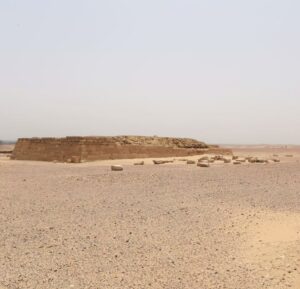
The necropolis of Dahshur forms an important part of the royal burial landscape of the Old and Middle Kingdom. Therefore, it offers plenty of opportunities to draw and specify various lines of development not only of royal but also elite funerary and cultic traditions. One interesting area in regard of such questions is the one of the Lepsius mastaba cemetery, located centrally between the two pyramids of Snofru. With its over 20 tombs, all of which are arranged in straight rows and lines, it forms a direct link between the grid-like cemeteries at Meidum and Giza and therefore can help to better understand the idea and implementation of state-planned tombs. The basis of this and further topics of research is formed by the results of the excavations of the DAI Cairo in the area of the Lepsius Cemetery, parts of which are to be presented in the lecture.
Zaterdag 11 december, 13 – 16.15 uur
Huis van Horus donateursdag
Kosten: €5 voor niet-donateursMet twee lezingen:
Europese aciviteiten in Sheikh Abd el-Qurna aan het begin van de 19e eeuw
Eva Cornelisse, MA
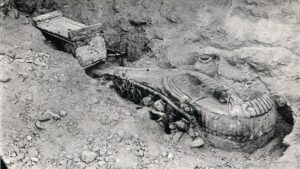
Het gebied rond het dorp Sheikh Abd el-Qurna, gelegen op de westelijke oever van de Nijl in Luxor, was zo’n 200 jaar geleden het toneel van activiteiten die wij ons nu niet meer zouden kunnen voorstellen. Na de veldtocht van Napoleon was in Europa de interesse in het oude Egypte sterk toegenomen, met name door de publicatie van de Description de l’Égypte. De machtsovername door pasha Mohammed Ali leidde tot een situatie van relatieve rust in het land, waardoor een groeiende stroom Europeanen de weg vond naar Egypte. Kunstenaars en reizigers, verzamelaars en handelaars, velen kwamen terecht in Qurna, waar nog veel te ontdekken viel. Het was een tijd van ongekende mogelijkheden, er waren nog geen regels of beperkingen en Egyptische oudheden werden in grote getale naar Europa verscheept. Wie waren deze mensen, dikwijls markante persoonlijkheden- met bijbehorende anekdotes- en hoe gingen zij te werk? Van graven als verblijfplaats tot mummiekisten als brandhout, deze lezing geeft een boeiend inkijkje in hoe het er aan toe ging in het Qurna in de tijd van de pioniers van de egyptologie.
Egypte door een Belgische lens: Jean Capart en de collectie historische foto’s van de KMKG
Wouter Claes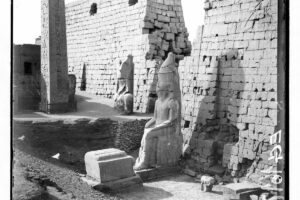
In de beroemde egyptologische bibliotheek van de Koninklijke Musea voor Kunst en Geschiedenis (KMKG) in Brussel wordt naast een grote collectie boeken en tijdschriften ook een bijzondere fotocollectie bewaard. Zij werd aangelegd onder het initiatief van Jean Capart (1877–1947), de grondlegger van de egyptologie in België, en bestaat uit meer dan 7000 fotografische glasnegatieven. In deze lezing nemen we een kijkje in deze unieke collectie en ontdekken we hoe deze foto’s een uitzonderlijke kijk bieden op de opkomst en het belang van de egyptologie in België en daarbuiten in de eerste helft van de 20ste eeuw.
Dinsdag 14 december, 18.15 uur
Neues aus Heliopolis. Ägyptisch-deutsche Ausgrabungen im August-Oktober 2021 im Sonnentempel von Matariya/Kairo
Florence Langermann and Prof. Dietrich Raue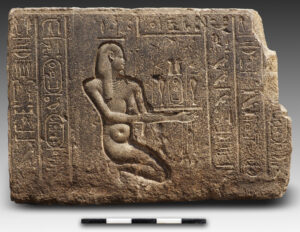
Die Ausgrabungen des Ägyptischen Ministeriums für Tourismus und Antiken, des Ägyptischen Museums der Universität Leipzig und des i3Mainz-Institut für Raumbezogene Informations- und Messtechnik der Hochschule Mainz berichten über jüngste Entdeckungen.
Woensdag 15 december, 18.30 uur
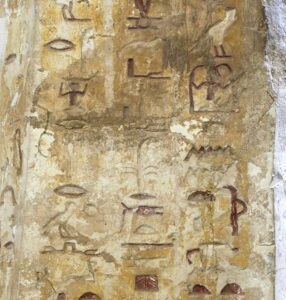 Von Monsterschlangen. Epigraphische Beobachtungen im Grab des Anchtifi von Hefat (Ende 3. Jt. v.Chr.)
Von Monsterschlangen. Epigraphische Beobachtungen im Grab des Anchtifi von Hefat (Ende 3. Jt. v.Chr.)
Prof. Dr. Ludwig Morenz en David Sabel MAAnchtifi von Hefat (heutige Region Mo’alla) ist eine der prägnantesten Figuren aus der ägyptischen Geschichte und ein besonderer „Zeitzeuge“ für das Ende des dritten Jahrtausends v. Chr. mit der Auflösung des Territorialstaates in der Zeit der Regionen. Seine Selbst-Präsentation wurde auf sieben Pfeiler seines Felsgrabes geschrieben. Zum Ausdruck ganz neuer Vorstellungen – einem geradezu „messianischen“ Anspruch als „Anfang der Menschen, Ende der Menschen“ – wurde eine neue Sprache geprägt, und diese Innovationskraft ging weiter bis in die Bild-Schriftlichkeit. Im Rahmen unserer Neuaufnahme des Grabes (in Kooperation mit der University of Liverpool) werden wir vier besondere Zeichen diskutieren, die uns neue Einblicke in die Vorstellungswelt eröffnen, darunter die Charakterisierung des erstmals bei Anchtifi genannten Anti-Gottes Apophis.
15 – 17 december
Making and Experiencing Graffiti in Ancient and Late Antique Egypt and Sudan
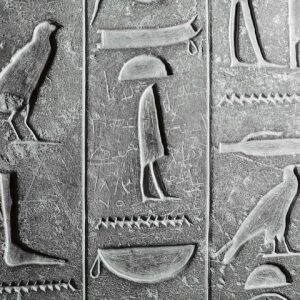
This the 2nd annual Nederlands Instituut voor het Nabije Oosten (NINO) postdoctoral fellowship conference, to be hosted online via Zoom, organised by Julia C. F. Hamilton as part of a two-year project on Old Kingdom graffiti at Saqqara.
Making and Experiencing Graffiti builds on recent graffiti-themed conferences in ancient and Late Antique Egypt and Sudan (e.g., Emberling and Davis 2019; Ragazzoli, Harmanşah, Salvador, Frood 2018), seeking papers to be presented under two major themes: ‘making’ and ‘experience’. In particular, papers that explore the mode, technique, and performance of graffiti-making are of interest, as are those which consider how textual and figural graffiti intersect with related corpora (e.g., mason’s and quarry marks, rock inscriptions, petroglyphs) along these lines, between the 3rd Millennium BCE – 7th century CE. A narrow definition of graffiti is eschewed, and speakers are encouraged to consider the socio-historical and practical circumstances in which marks and inscriptions were made and how they may respond to each other and other media around them.
Vrijdag 17 december, 18.30 uur
Im Bett mit den alten Ägyptern – Untersuchungen zum altägyptischen Schlafverhalten
Dr. Simone Gerhards (JGU Mainz)Auch im alten Ägypten wurde täglich geschlafen – diese Erfahrung war jedoch mit Assoziationen, Empfindungen und Metaphern verbunden, die sich von den heutigen unterscheiden. So wird der Schlaf nicht nur in alltäglichen Kontexten erwähnt und dargestellt, sondern spielt in der Literatur, Heilkunde, Religion, den Moral- sowie Jenseitsvorstellungen eine wichtige Rolle. Der Vortrag wird zwei große Themenbereiche zum Schlaf behandeln: Zum einen soll die Frage beantwortet werden, was über das tatsächliche Schlafverhalten bekannt ist (z. B. die Schlafdauer und die Gestaltung des Schlafplatzes). Zum anderen wird es darum gehen, was uns Texte und Bilder über das Wesen des Schlafes, seinen Einfluss auf den menschlichen Körper, die Umwelt und Gesellschaft verraten. Durch Vergleiche mit Schlafmustern anderer (antiker) Kulturen und unseren modernen Eigenheiten wird nach dem Vortrag sicher auch das eigene Schlafverhalten in einem neuen Licht erscheinen.
Zondag 19 december, 14.00 uur
RMO Topstukkenlezing: Het handschrift van Ipoewer
Lara Weiss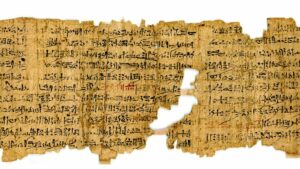
In deze topstukkenlezing vertelt conservator Lara Weiss over de ‘vermaningen’ van Ipoewer, het beroemdste Egyptische handschrift uit de collectie van het Rijksmuseum van Oudheden.
Ze gaat dieper in op de mogelijke archeologische herkomst, de inhoud en de verschillende duidingen van de tekst uit het Nieuwe Rijk (ca. 1307-1196 v.Chr.). Het handschrift van Ipoewer beschrijft de teloorgang van “de goeie ouwe tijd”, en de sociale ellende en burgeroorlog die daaruit voortvloeide.
Dinsdag 21 december, 20.00 uur
Chaos en Beheersing: Henri Asselberghs en zijn vriendschap met Jean Capart
Marleen De MeyerKosten: €4 voor niet-leden
 In 1961 publiceerde Henri Asselberghs een baanbrekende studie over de concepten van ‘chaos versus controle’ in de Predynastische en Vroegdynastische iconografie.
In 1961 publiceerde Henri Asselberghs een baanbrekende studie over de concepten van ‘chaos versus controle’ in de Predynastische en Vroegdynastische iconografie.Zijn boek lijkt echter uit het niets te komen, want niet alleen had Asselberghs nooit eerder over deze vroege periode van de Egyptische geschiedenis gepubliceerd, hij was niet eens Egyptoloog, maar directeur van het Spoorwegmuseum in Utrecht. Wie was deze Mijnheer Asselberghs, en hoe kwam hij tot zijn magnum opus? In deze lezing worden op basis van archiefbronnen en familiedocumenten zijn leven en carrière in de eerste helft van de 20e eeuw gereconstrueerd. Speciale aandacht gaat naar Belgisch Egyptoloog Jean Capart, met wie hij een kwart eeuw bevriend was, en die een cruciale rol speelde in zijn ontwikkeling als Egyptoloog.
-
Online events in het najaar
Ondanks dat er steeds meer mogelijk is zijn er nog genoeg online lezingen, cursussen en congressen bij te wonen. Ze staan hier voor je verzameld:
 14 september, 18.00 uur
14 september, 18.00 uurCamp life at Balat (Dakhla Oasis) – the Sheikh Muftah site
Dr. Clara Jeuthe (DAI Cairo)The excavations of the archaeological mission of the IFAO in Balat (Dakhla Oasis) uncovered a large residential camp area of the so-called Sheikh Muftah Group, the indigenous population of the oasis. Dating from the early 4th Dynasty (ca. 2600 BC), these camps were only briefly but intensively occupied. Revealing for the first time a well preserved intra-site stratigraphy with hitherto unknown dwelling features, the excavation results provide in-depth insights into the camp life of a non-sedentary group in a time, when Egyptian Pharaonic settlement activities were just beginning to be evident in archaeological data. Thus, the data gathered offers not only hints about tool and food production for example; they also contribute to the discussions about non-sedentary groups in the Western Desert and the transcultural exchange between the Sheikh Muftah community in Balat and the Egyptian Pharaonic population.
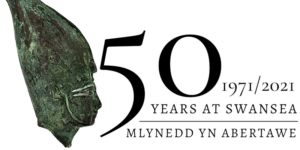 15 – 17 september
15 – 17 septemberThe Egypt Centre
Zoom conference to mark fifty years since part of the Wellcome Collection arrived to Swansea UniversityOn the 17th September 1971, ninety-two crates consisting of some 4,500 objects (mainly Egyptian) arrived to Swansea University. This was part of dispersal of the Egyptian material at the Wellcome Collection, which probably amassed somewhere in the region of 20,000 objects. To mark the fiftieth anniversary of this event, the Egypt Centre will be hosting a free three-day Zoom (Webinar) conference. The conference will focus on Wellcome’s Egyptian and Sudanese collections, which were dispersed to numerous institutions following his death in 1936. It will feature talks and virtual handling sessions/tours by curators, collections managers, and researchers associated with the Wellcome material.
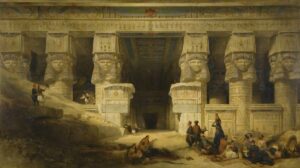 16 september, 19.00 uur
16 september, 19.00 uurFrom Avon to Nile: The adventurous life of Amelia Edwards
Dr. Margaret JonesAs a best-selling novelist, and a bold and witty travel writer, Amelia Edwards was a household name. At age 50, inspired by a Nile journey from Cairo to Upper Egypt, she embarked on a new career to promote archaeology and conservation. She co-founded the Egypt Exploration Fund and packed lecture halls on both sides of the Atlantic. She brought to vivid life the bygone world of Ancient Egypt; often using her talks to subtly promote women’s rights.
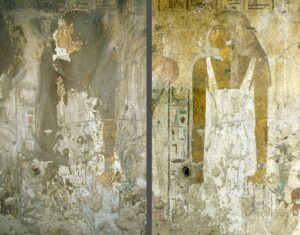 23 september, 12.00 uur
23 september, 12.00 uurConservation of Theban Tomb Paintings: A Tale of Two Tombs
Bianca MaddenThis talk will look at the purpose and context of conservation work in the tombs of the Theban Necropolis, the most common deterioration factors found and treatment approaches. Two tombs will be used as examples, the American Research Centre in Egypt’s project at the Tomb of Menna (TT69), and the 16-year conservation and research project at the Tomb Chapel of Sennefer (TT96A) by the Belgian Archaeological Mission in the Theban Necropolis by the Université de Liège and Université libre de Bruxelles. Bianca will discuss conservation approaches, ethics, the materiality of the tombs, as well as the specific technical challenges of each project.
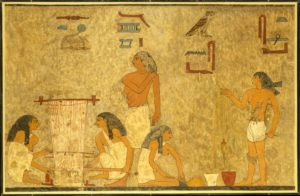 Vanaf 23 september
Vanaf 23 septemberTextiles and Ancient Egypt
Dr. Carolyn Graves-BrownInteractieve zoom cursus
10 x donderdag van 16-18 uurAncient Egyptian textiles appear in museums all across the world, from mummy wrappings to diaphanous flowing white robes and even colourful early medieval garments, but how much do we really know about them?
 28 september, 18.30 uur
28 september, 18.30 uurNew Discoveries in the Middle Kingdom Royal Necropolis at South Abydos
Dr. Josef WegnerRecent excavations at South Abydos have revealed a royal cemetery dating to 1850-1600 BC. Initiated by Senwosret III in the 12th Dynasty, the necropolis of ‘Anubis Mountain’ continued to be used by subsequent kings of the 13th Dynasty and Second Intermediate Period. The lecture will look at work on the 12 known tombs. These include the tombs of Senwosret III, Seneb-Kay and those attributed to the brother-kings Neferhotep I, Sobekhotep IV and Sahathor. Many questions remain and the lecture will delve into the mysteries about this necropolis and the pharaohs buried there.
30 september, 10.00 uur
What does it mean to be ‘sad’ in Ancient Egypt?
Madeline JenkinsThe nature, function and universality of emotions has recently been contested. Rather than assuming that emotions are universal, the social constructionist position on emotions argues that emotions are, to an extent, constructed by the cultural and temporal contexts in which they are evoked. Against this background, this paper examines the usage of a single ancient Egyptian lexeme belonging to the ‘sadness’ semantic field, namely ı͗nd to first arrive at a precise meaning of the lexeme before exploring how the emotion concept(s) denoted by ı͗nd could have been rendered linguistically. Key concepts from the History of Emotions approach are employed to frame the analysis. To conclude, this paper compares the emotion concept(s) denoted by ı͗nd with the anglophone emotion concept of ‘sadness’.
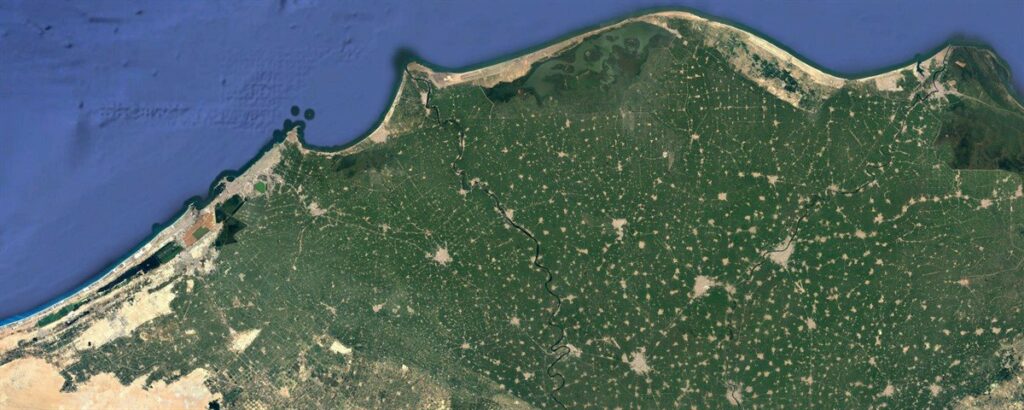
30 september – 1 oktober
EES Delta Survey Conference & Workshop
The Delta Survey Conference and Workshop is a biannual event bringing together researchers working in the Egyptian Delta. It is supported by the EES Delta Survey project and run in collaboration with a host institution and always in partnership with the Ministry of Tourism and Antiquities.
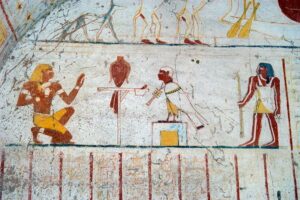 4 oktober, 18.00 uur
4 oktober, 18.00 uurHigh-status burials in the Napatan Period: cultural interactions between Egypt and Nubia
Dr. John Taylor (British Museum)The burials of the Napatan royal families are notable for their adoption of Egyptian mortuary practices, iconography and texts. The appearance of closely comparable features in Egyptian burials at the same period raises important questions about the transmission of ideas. This lecture examines evidence from both regions and considers the Napatans’ role both as instigators and recipients of change in the mechanics of providing for the dead.
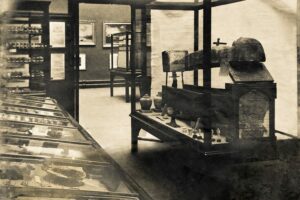 13 oktober, 14.00 uur
13 oktober, 14.00 uurMrs Goodison’s Egyptology Collection
Dr. Jo BackhouseLocal lady Mrs Anne Goodison was a collector of Egyptology during the 19th century. Records simply record her as an amateur Egyptologist and a student of hieroglyphics. As she was a collector and buyer rather than an excavator, very little is recorded of her. This description however, does not do justice to the fantastic collection that she put together which is now on display at The Atkinson. Jo Backhouse will be discussing what we do know about Mrs Goodison and also taking a look at some of the key pieces from the collection.
 14 oktober, 19.30 uur
14 oktober, 19.30 uurTombe met uitzicht: Landschap en klimaat in het oude Egypte
Nicky van de BeekGratis voor studenten en donateurs van Huis van Horus, anders €5
De grafwanden van Oudegyptische tombes staan vol met landschappen: woestijnen waarin gejaagd wordt met honden, moerasscènes met de grafeigenaar vissend in een woud van papyrus, herders die hun kuddes laten grazen tussen het struikgewas en zorgvuldig vormgegeven tuinen. Vooral de Ouderijks grafscènes laten een wereld zien die niet meer bestaat: water waarin nijlpaarden en krokodillen elkaar bevechten, een woestijn krioelend van gazelles, oryxen en ibexen. Was dit wishful thinking of zag het landschap er echt zo anders uit dan nu? Welke rol speelde de jaarlijkse Nijloverstroming? En wat ging er mis aan het einde van het Oude Rijk?
Ook tijdens het Nieuwe Rijk horen we over ontypisch Egyptisch weer: graffiti in de Thebaanse heuvels spreken over ‘het neerkomen van water uit de hemel’. De Vallei der Koningen had te maken met flash floods. En in westelijke Thebe werden grote tempels, paleizen en kunstmatige meren aangelegd in een gebied waar nu de woestijn heerst. Hoe gingen de Oude Egyptenaren om met klimaatverandering en wat kunnen we hier vandaag de dag van leren?
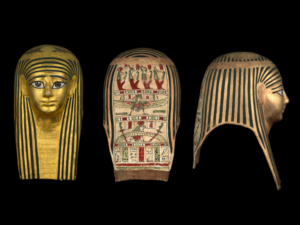 19 oktober, 14.00 uur
19 oktober, 14.00 uurLayer by Layer: the Manufacture of Graeco-Roman Funerary Masks
Marie VandenbeuschThis talk will approach Ptolemaic cartonnage masks from a manufacturing point of view. These funerary artefacts were produced by layering textiles – or reused papyrus sheets – with plaster and glue. Despite the use of the same basic components, the process of manufacture could vary depending on shape, size, time and place. We will try to clarify the production methods and the different phases of manufacture, as well as contextualise a group of masks curated by the British Museum. To provide a better understanding of their production, we will examine these masks layer by layer, using different imagery techniques, such as X-ray, CT and surface scanning. We will consider the use of a mould to shape the face from inside, the layering of textile, the application of gesso to strengthen the mask or to sculpt features, and finally the decorative layer of paints and gilding.
28 oktober, 14.50 uur
Extraordinary bodies: What do Egyptian statues do?
Professor Elizabeth FroodKosten: £5
In this lecture I discuss the composition of temple statues, and the questions they raise in terms of personhood, performance, and material presence. I take a case study approach, examining in particular a small group of late 18th and early 19th Dynasty statues which seemingly defy convention, presenting their owners as shabtis, including one that shows its high-ranking owner as a miller. Why these forms in temples?
 2 november, 14.00 uur
2 november, 14.00 uurTiny Egypt: Ancient Egypt through a macro lens
Julia ThorneTiny Egypt is a photographic project that takes a closer look at the more diminutive artefacts from Ancient Egypt and explores their beauty that’s often too small for the naked eye. In this talk, Julia will take you on a tour of her favourite images of artefacts from Manchester Museum, The Garstang Museum of Archaeology, and Bolton Libraries and Museum to show you how she uses macro photography and focus stacking to create stunning images. You’ll also hear about other techniques, such as dramatic lighting and lightboxes, to produce images that have been featured in exhibitions such as the Garstang Museum’s Book of the Dead: Passport through the Underworld and Manchester Museum’s globally touring Golden Mummies of Egypt.
 20 november, 15.00 uur
20 november, 15.00 uurFrom Saqqara to Leiden: The journey of the tomb chapel of Hetepherakhet
Nicky van de Beek£3 tot £6
The offering chapel of Hetepherakhty was once part of a mastaba tomb in the desert of Saqqara. It dates back to the fifth dynasty, when kings built pyramid complexes and sun temples scattered around the Memphite necropolis. Hetepherakhty held titles of a judicial nature, but as a priest he was also connected to the cult of former kings. His modest sized offering chapel is decorated with high quality relief decoration. It shows him spearfishing in the marshes, inspecting agricultural activities and enjoying a funeral meal. He is surrounded by scenes of fishing, fowling, baking and brewing, as well as preparations for his funeral. The tomb was excavated by Auguste Mariette in the1860s, when a different stance was held with regard to antiquities than nowadays. How did the tomb chapel end up in a museum in Leiden? What happened during its long museum history? And how can it be studied using modern technology?

